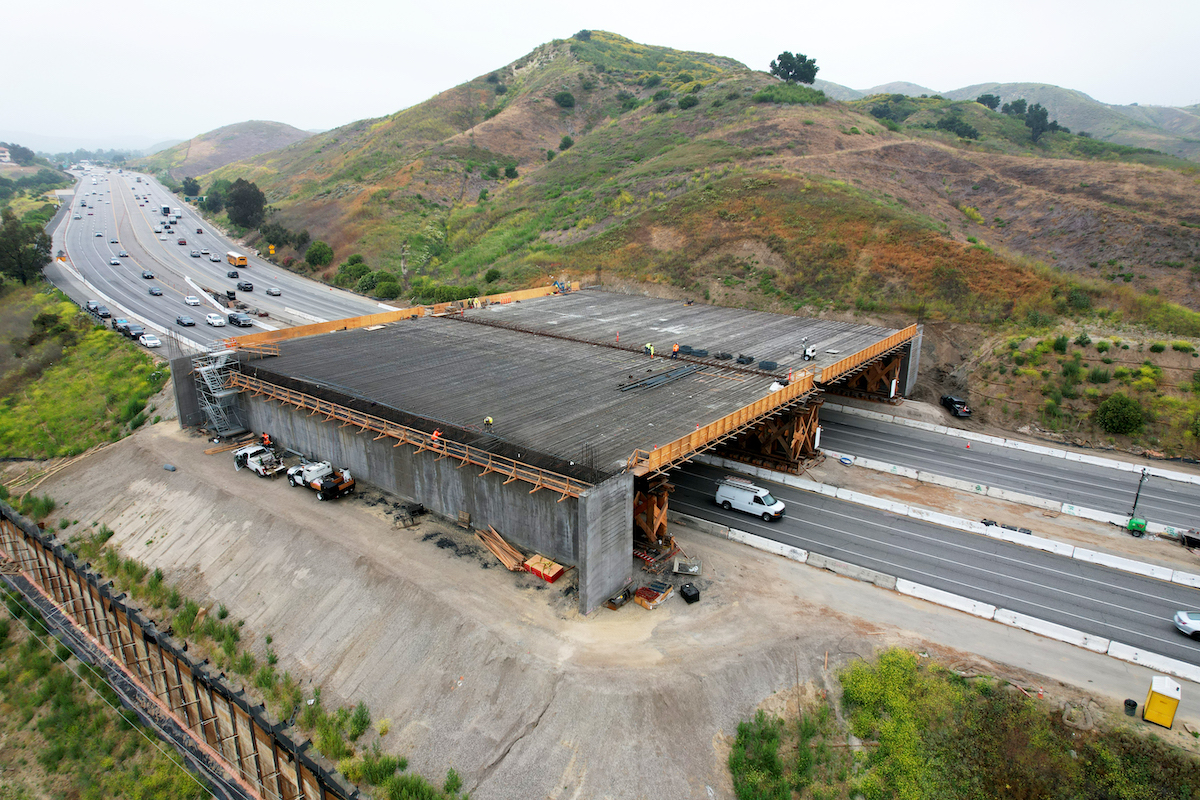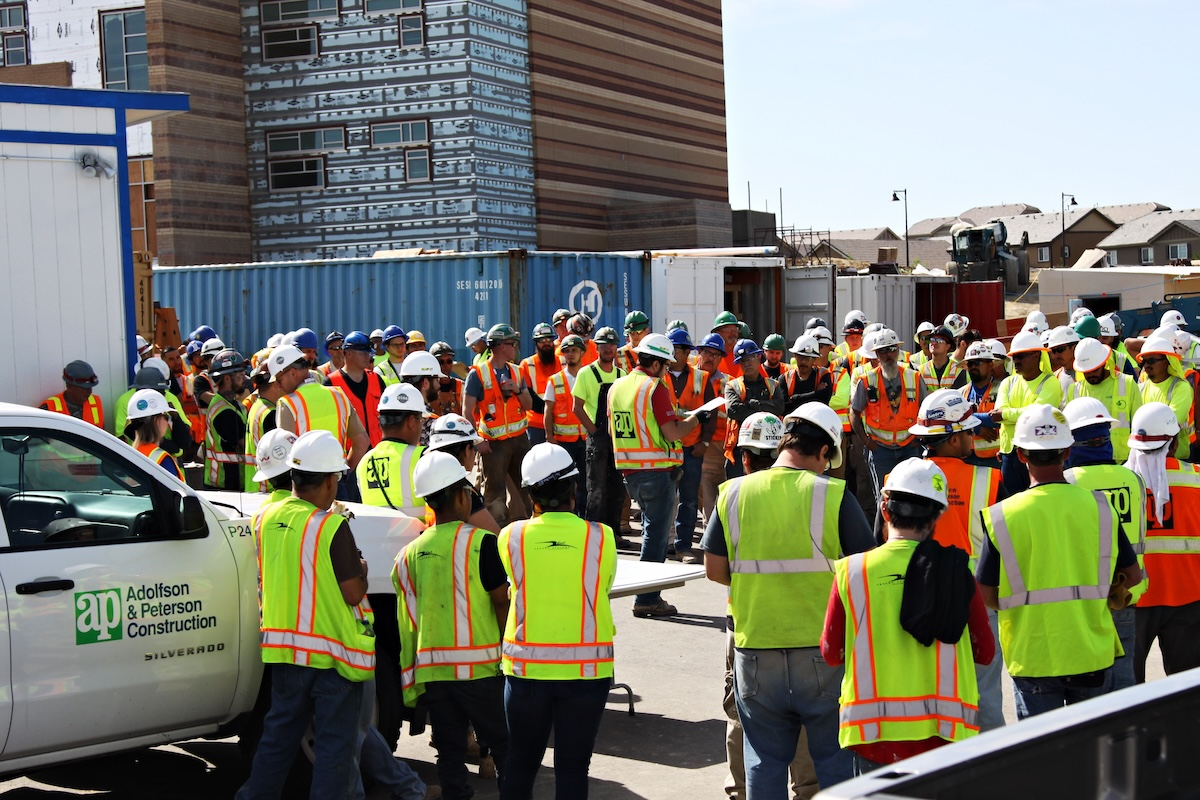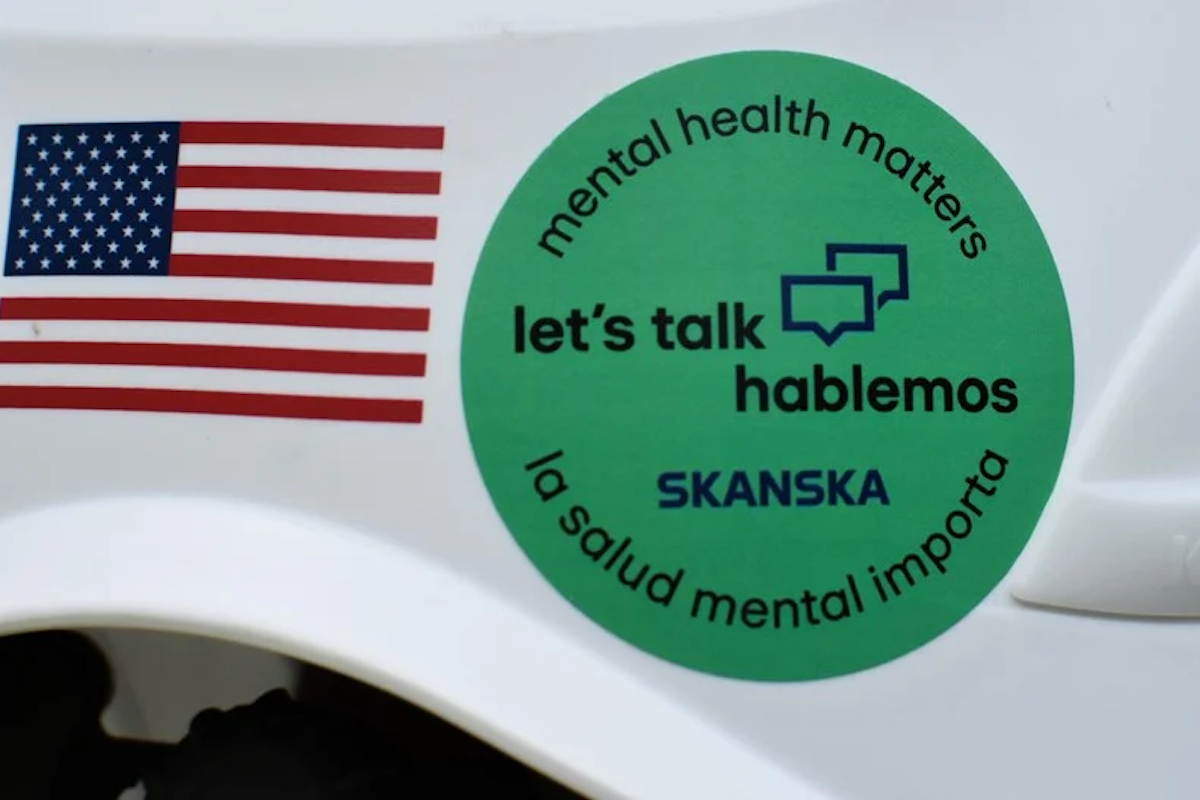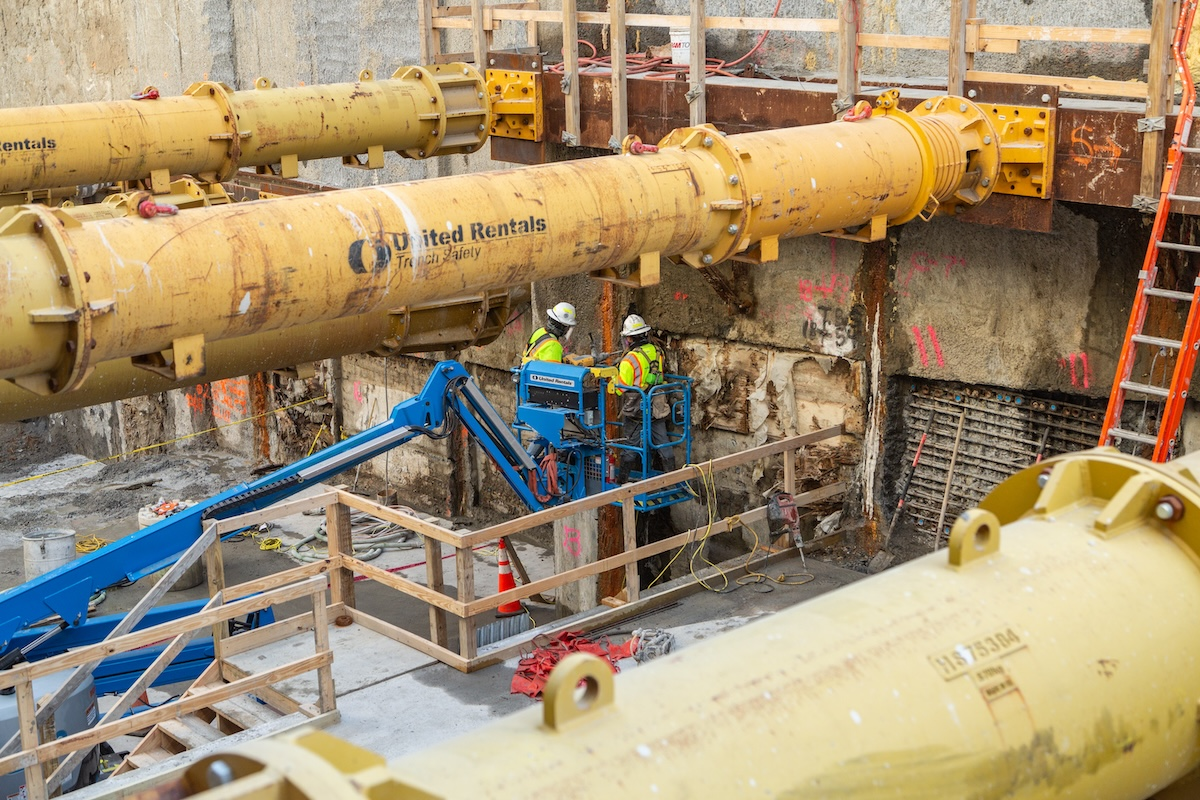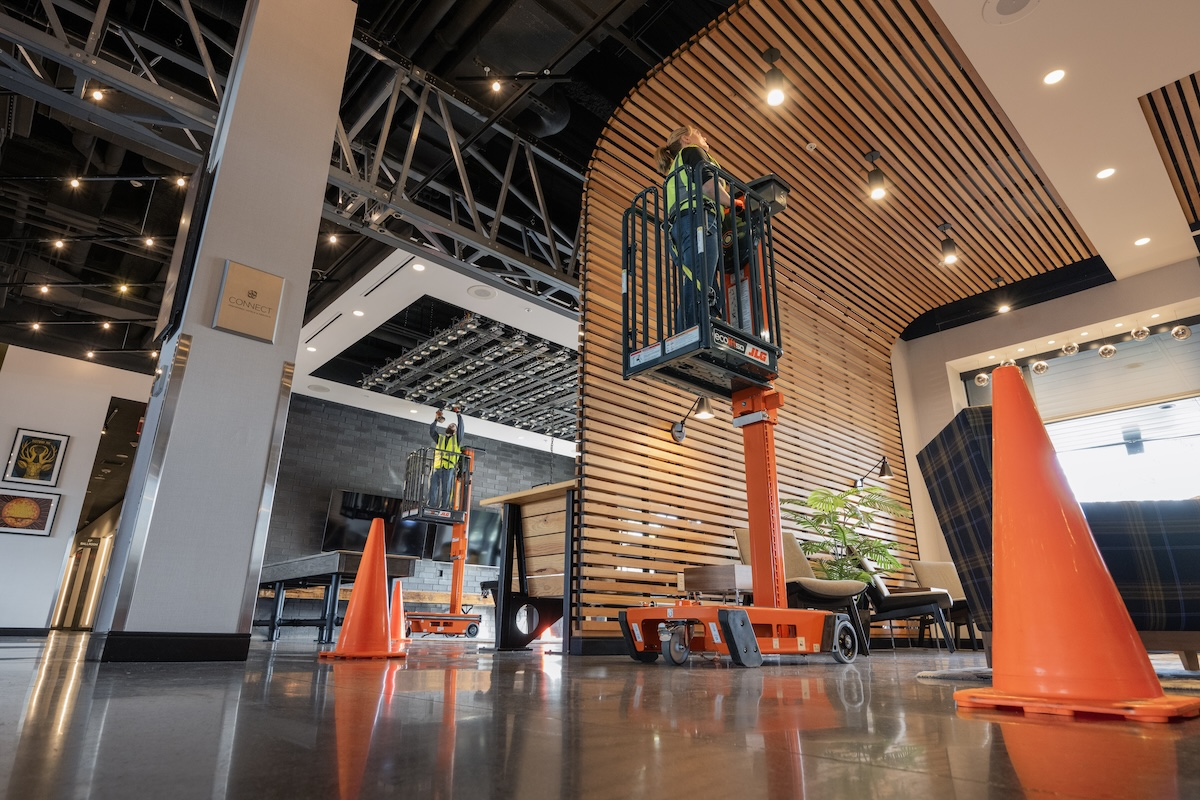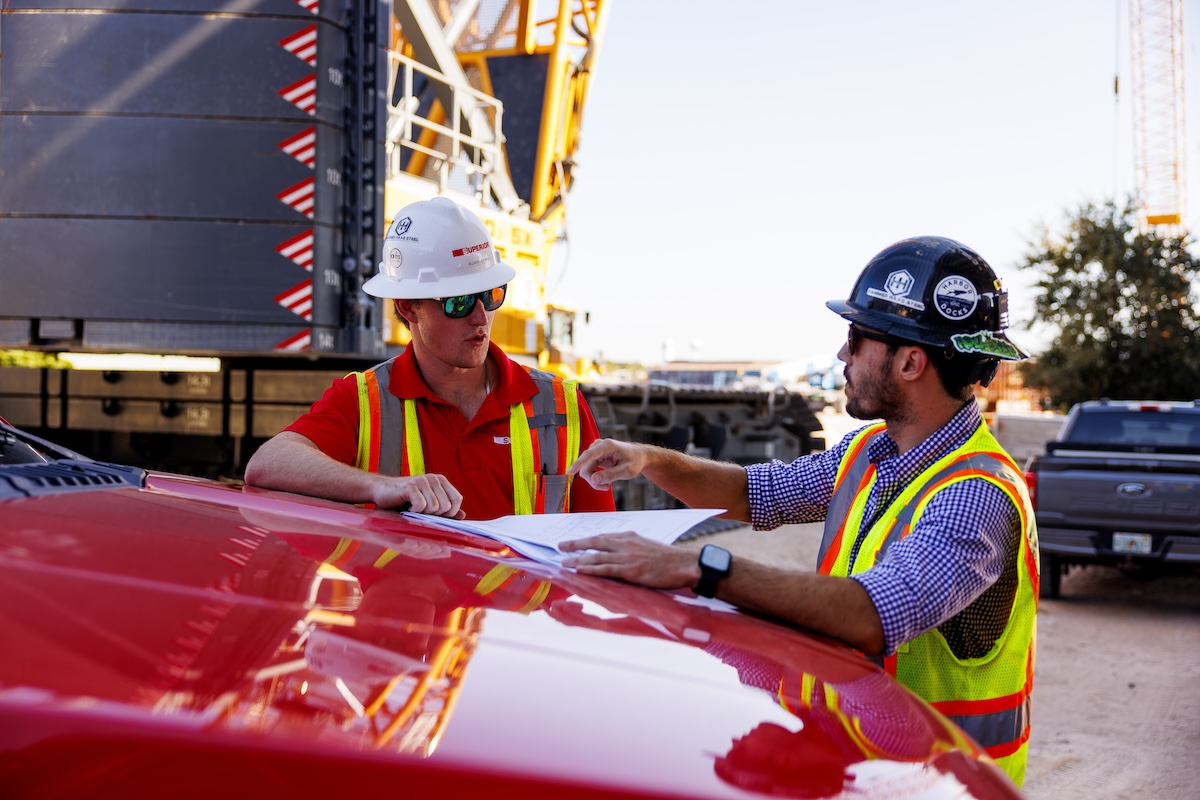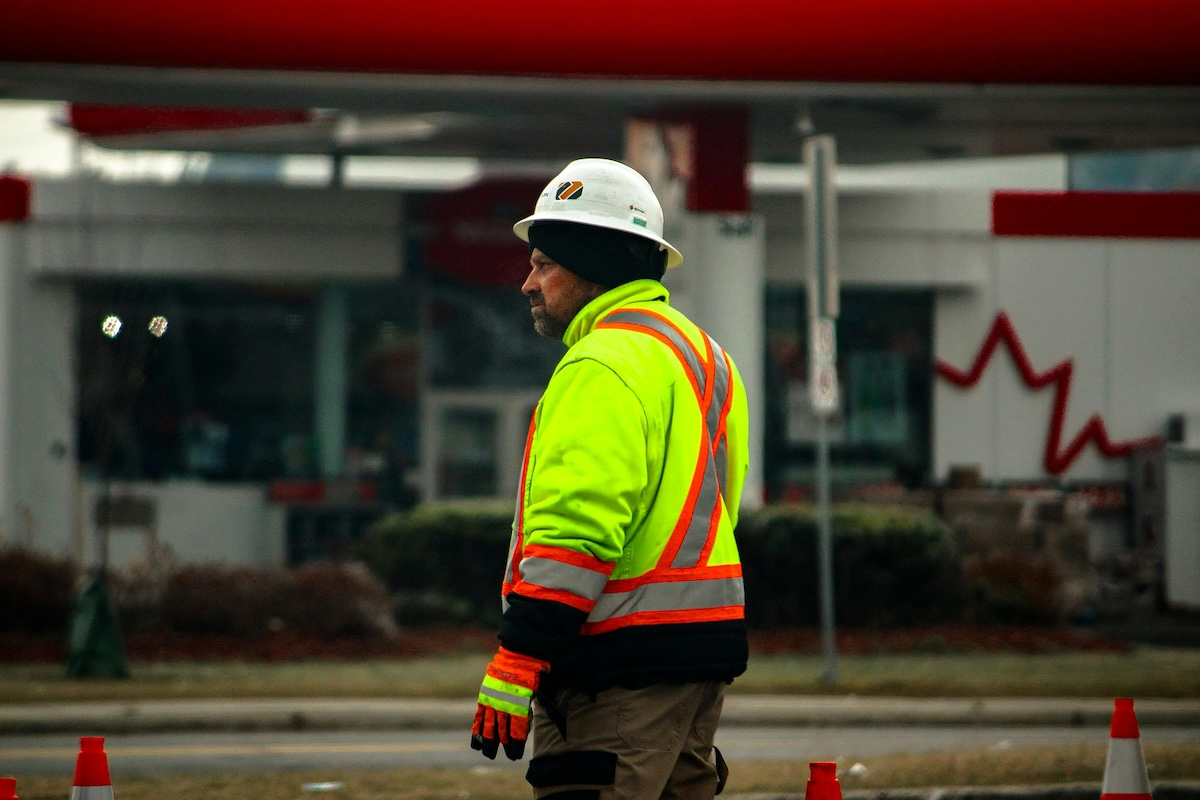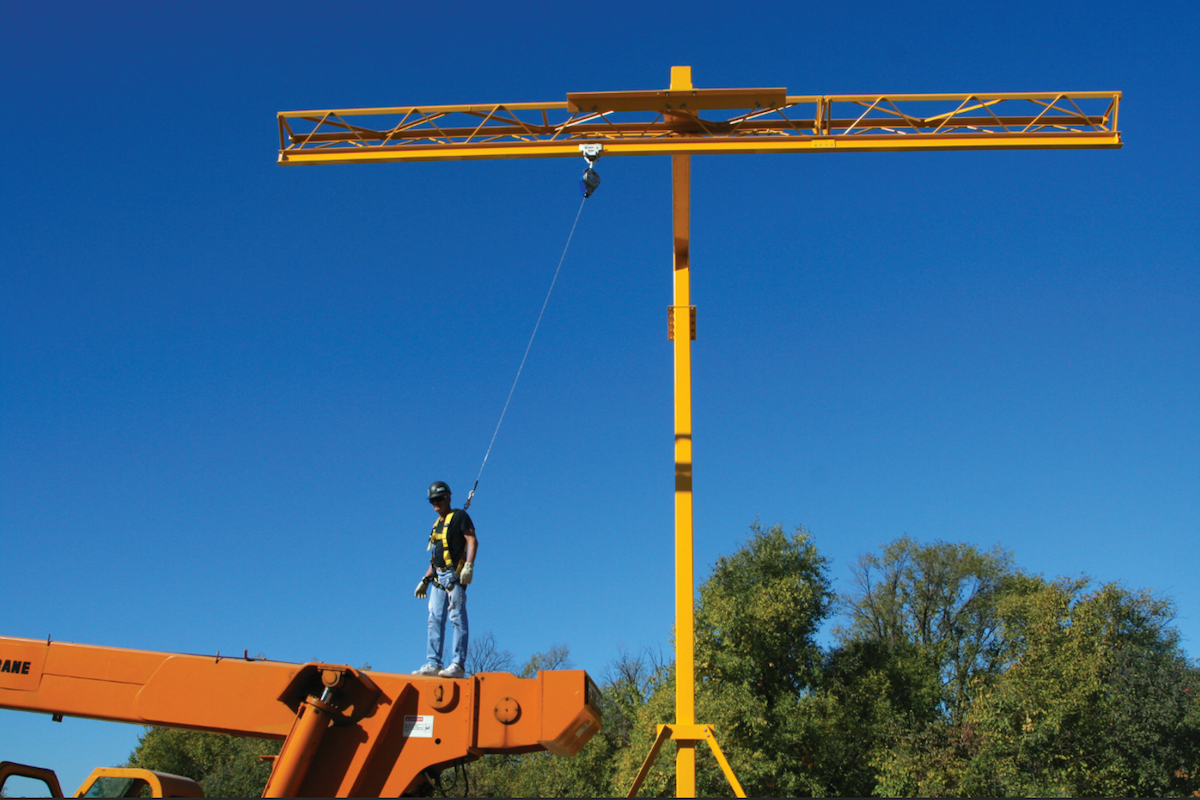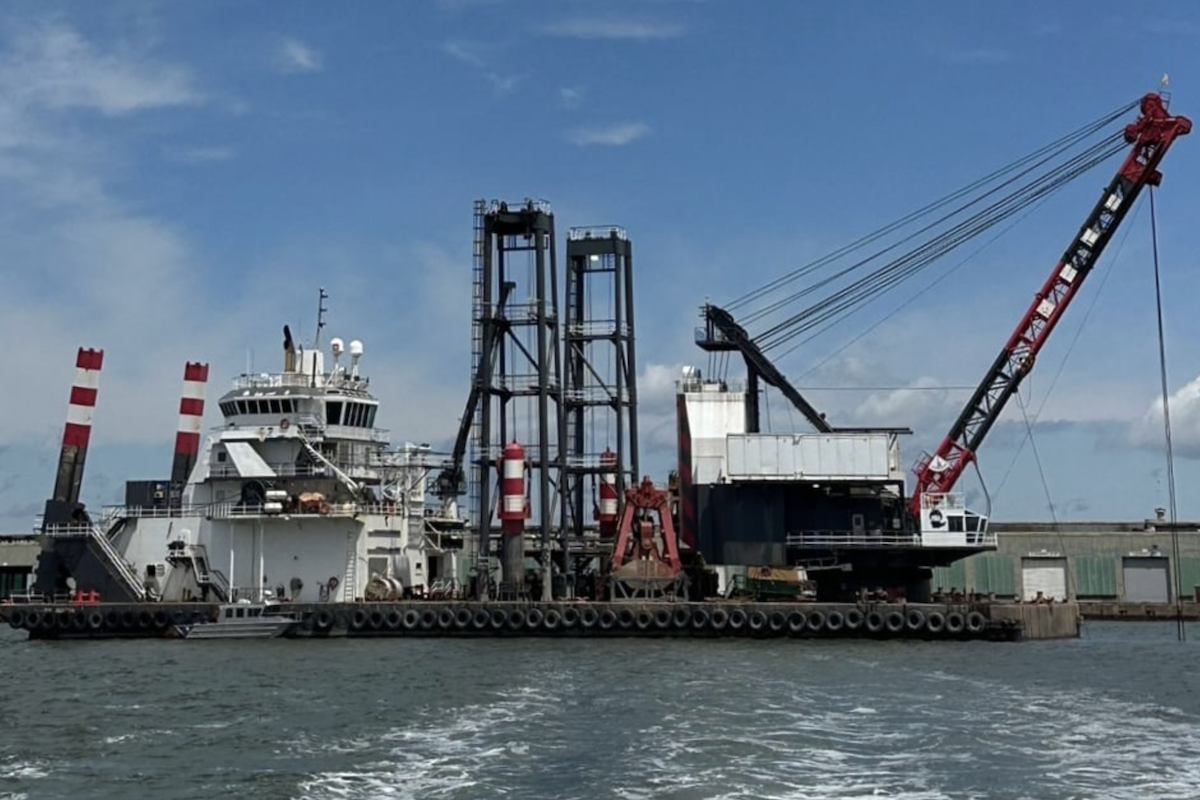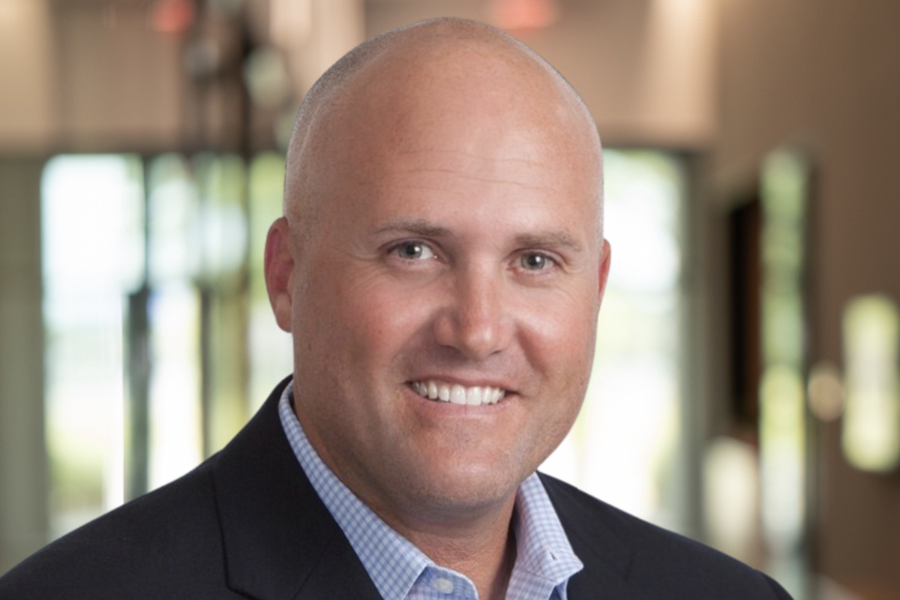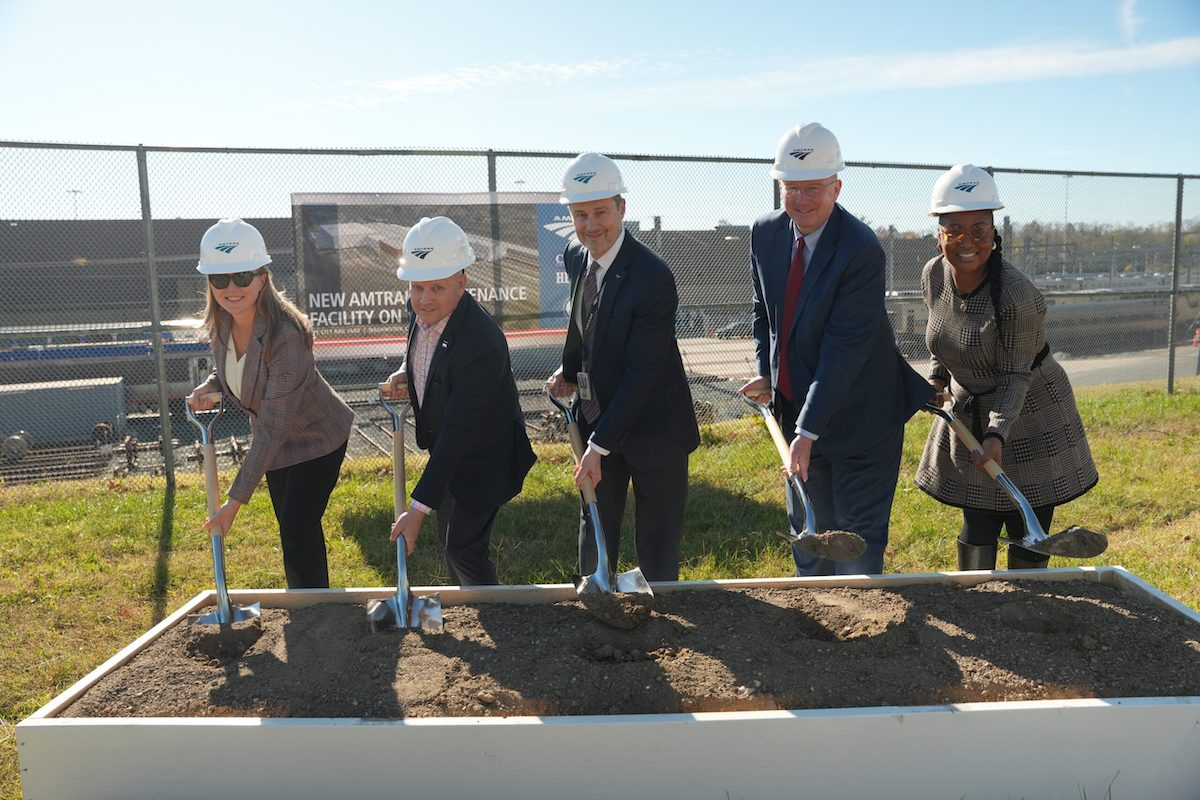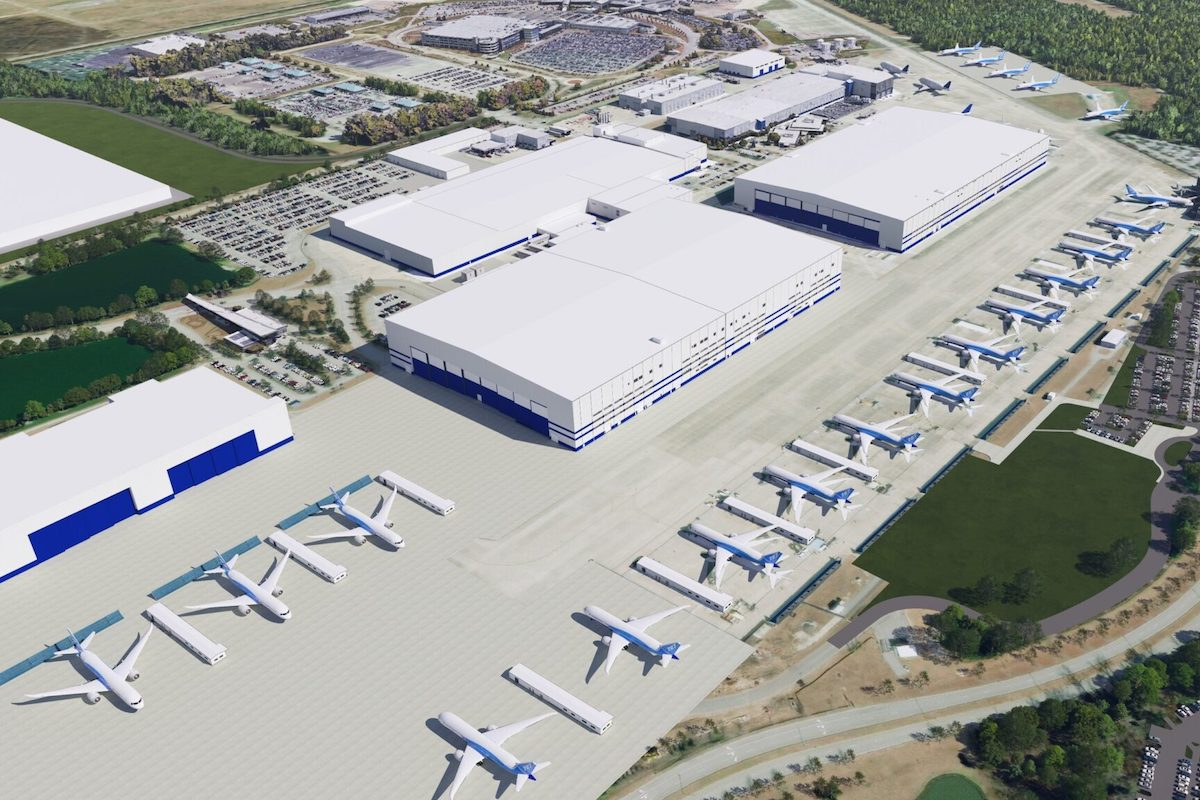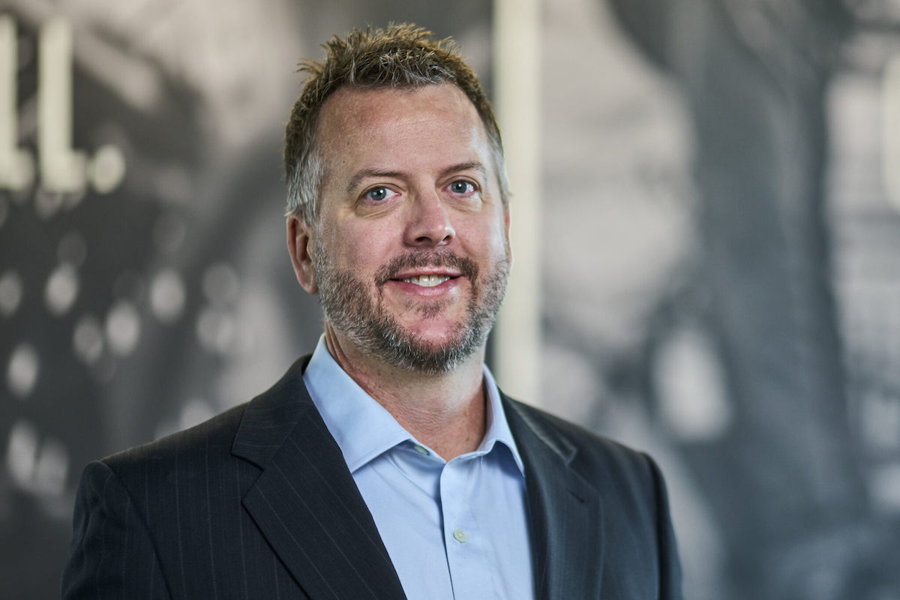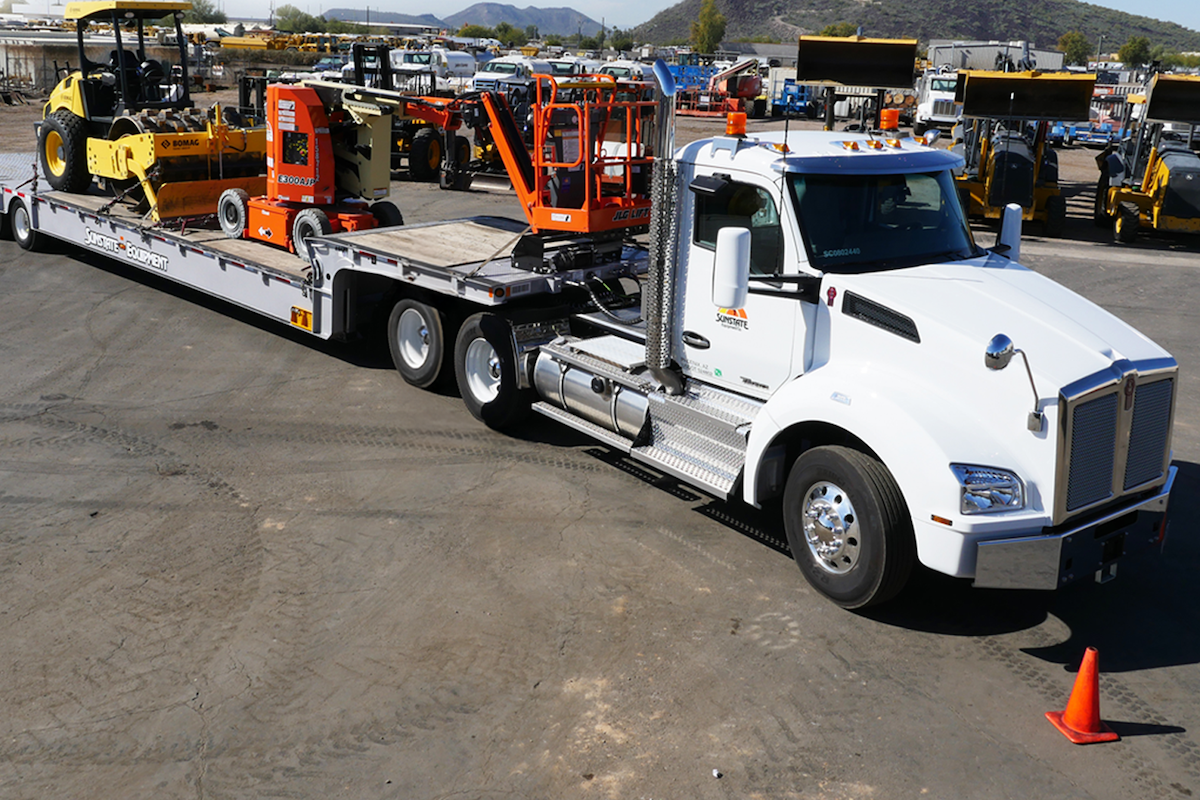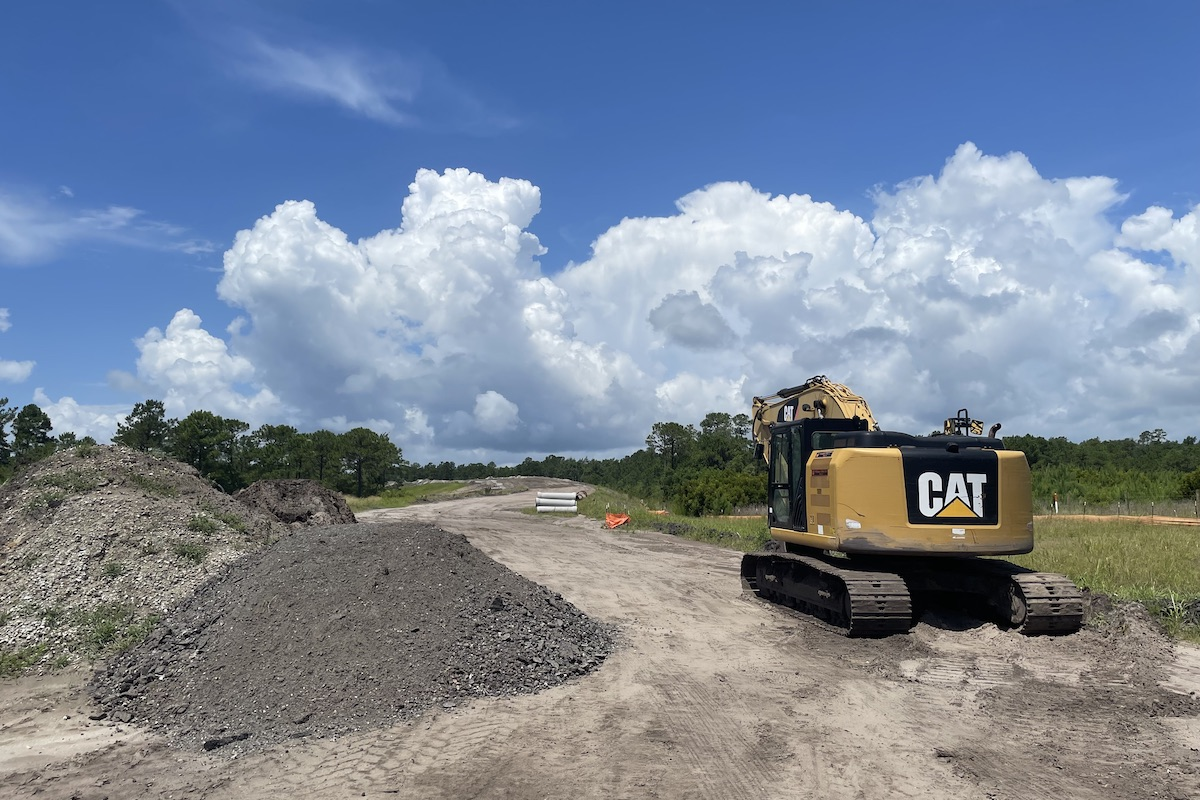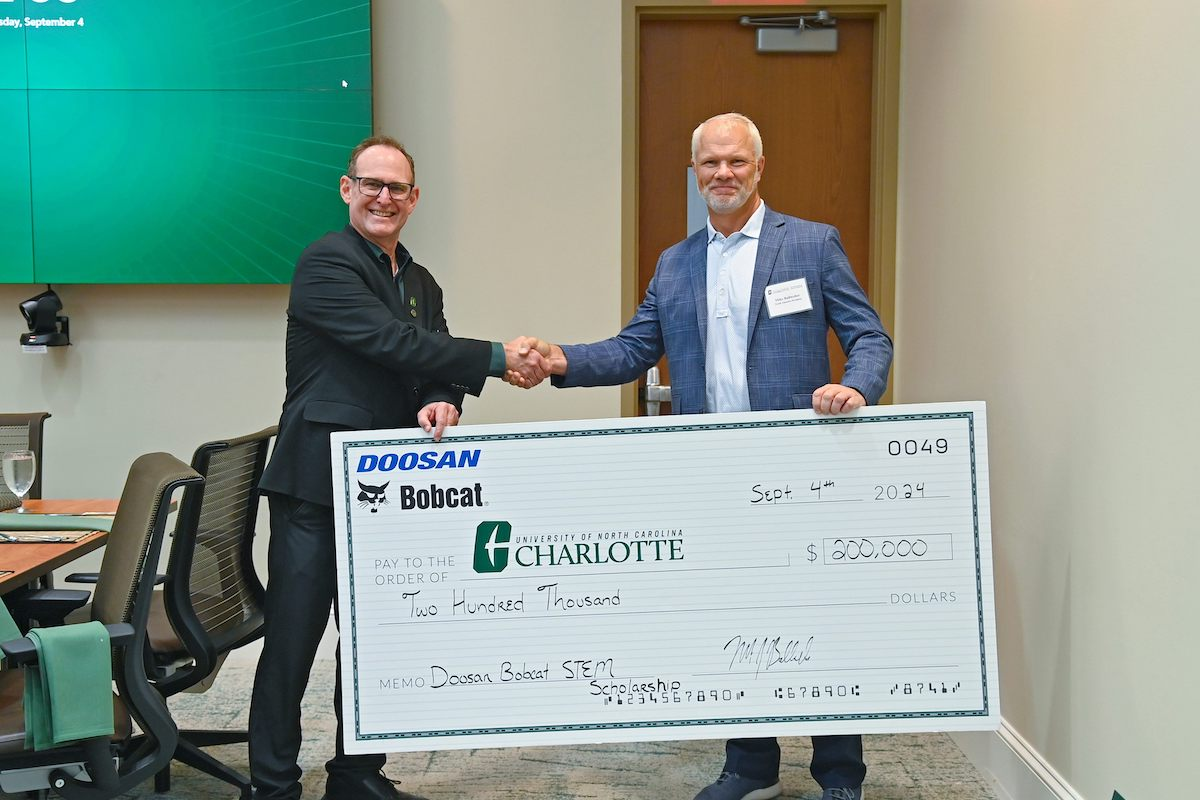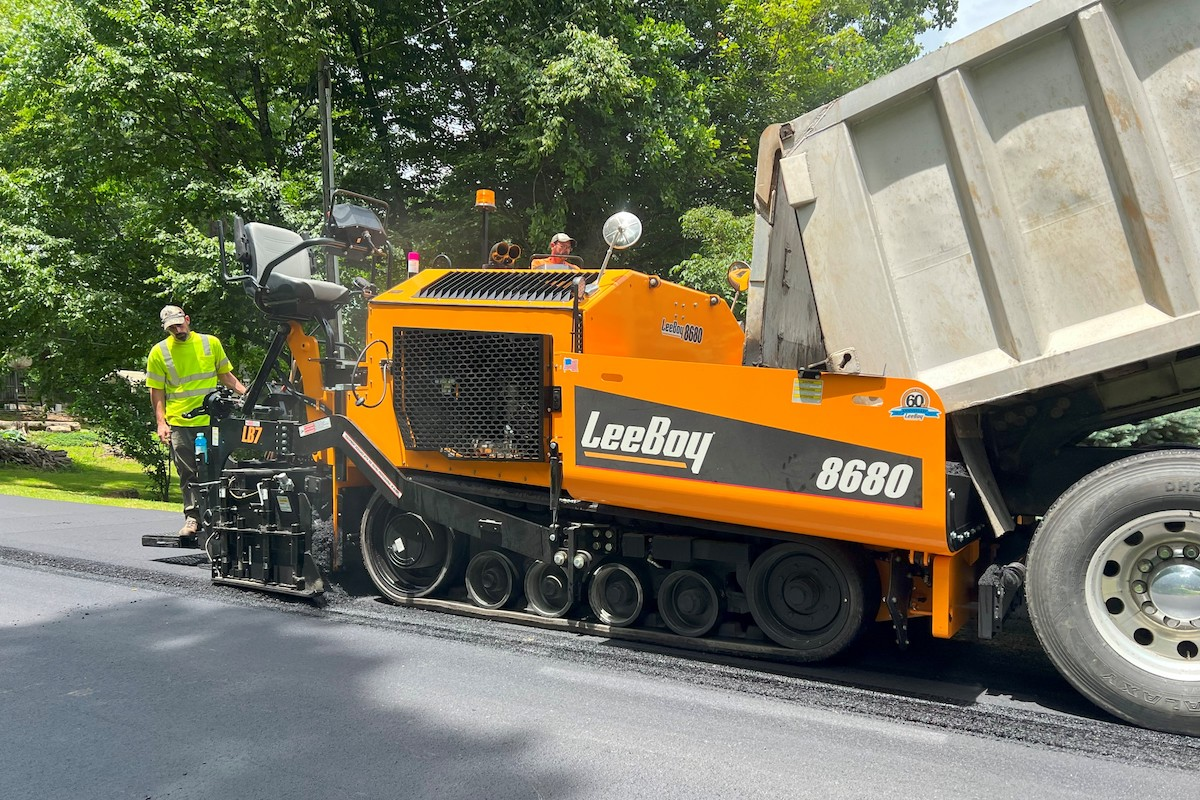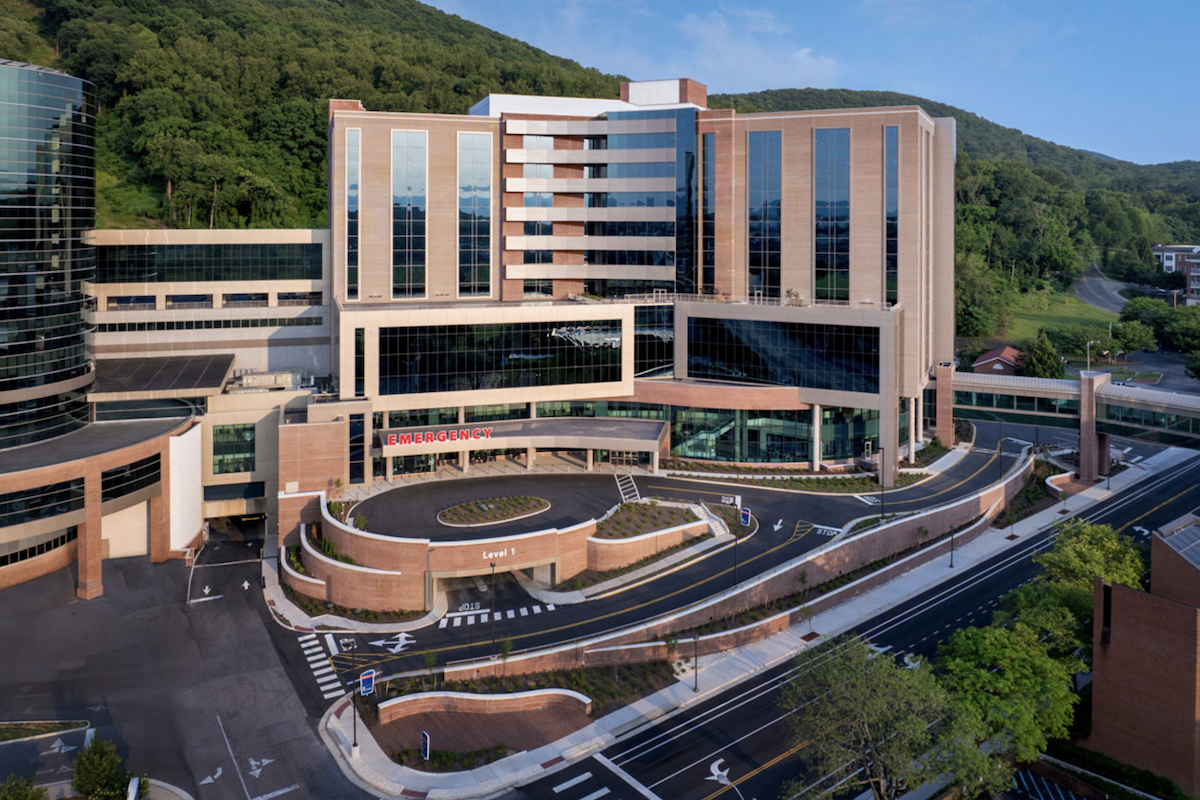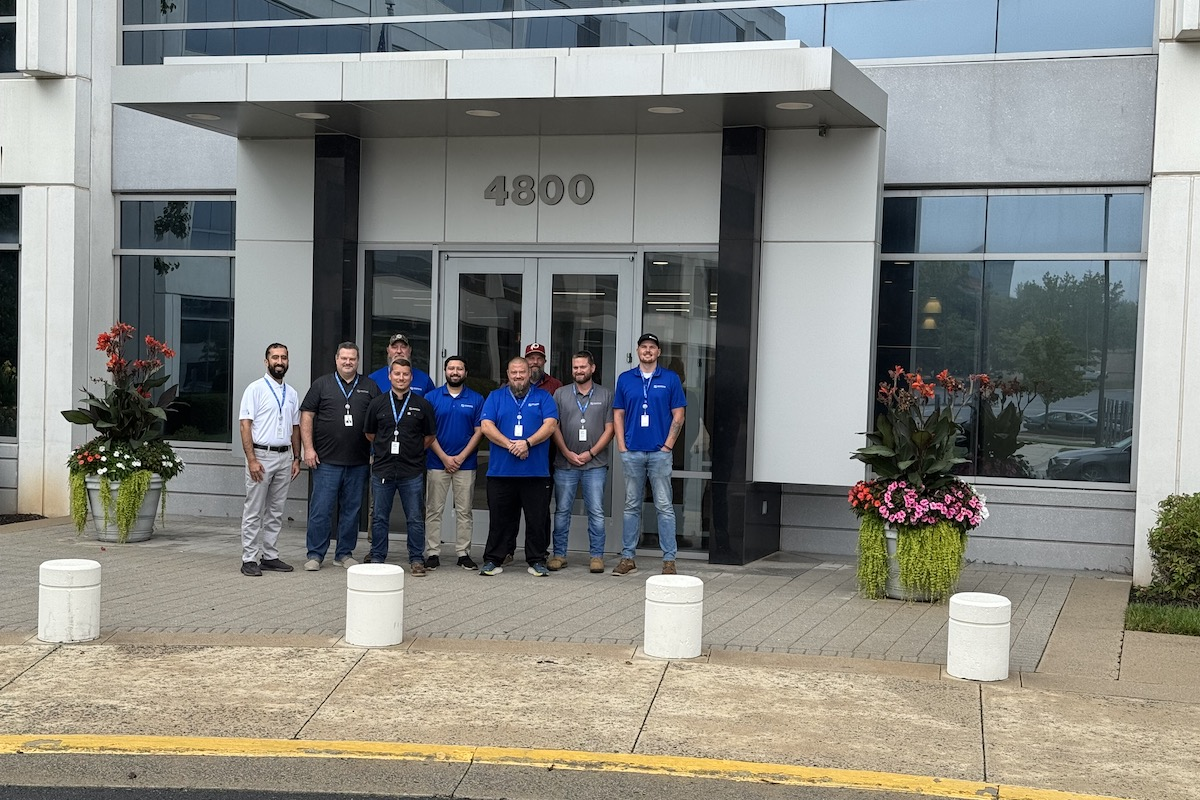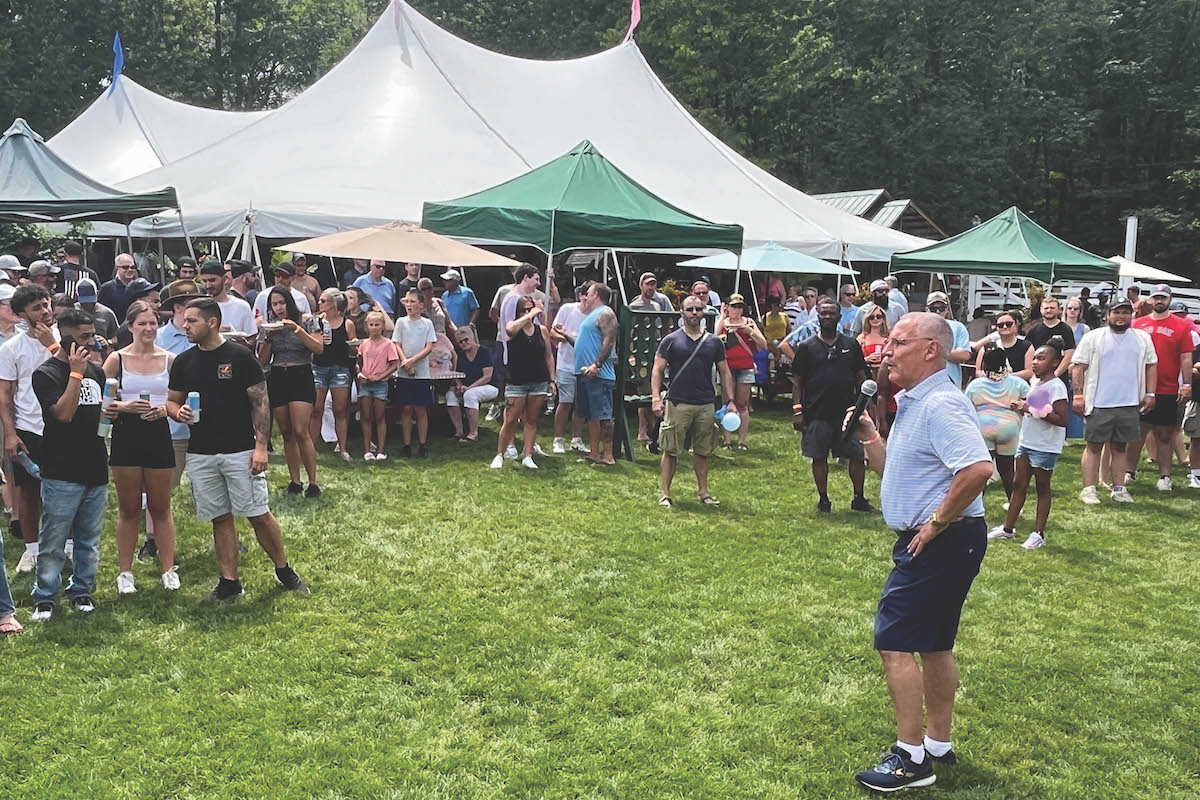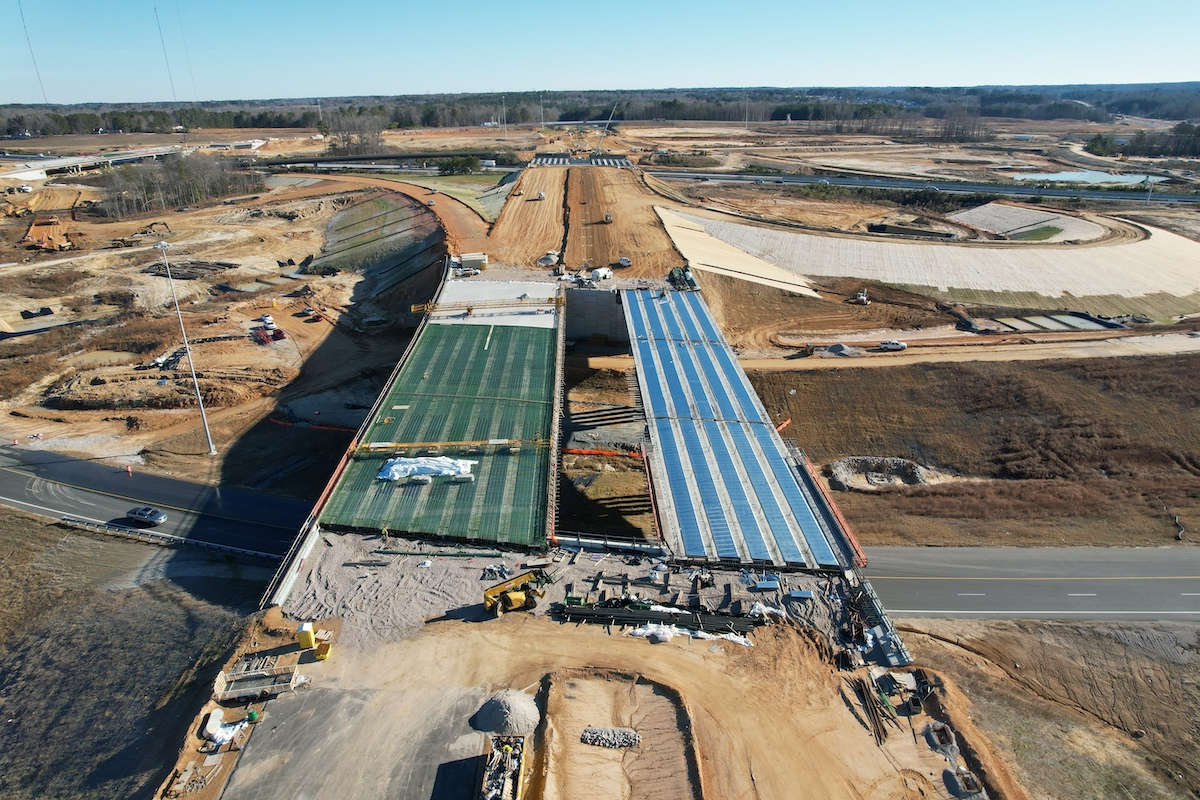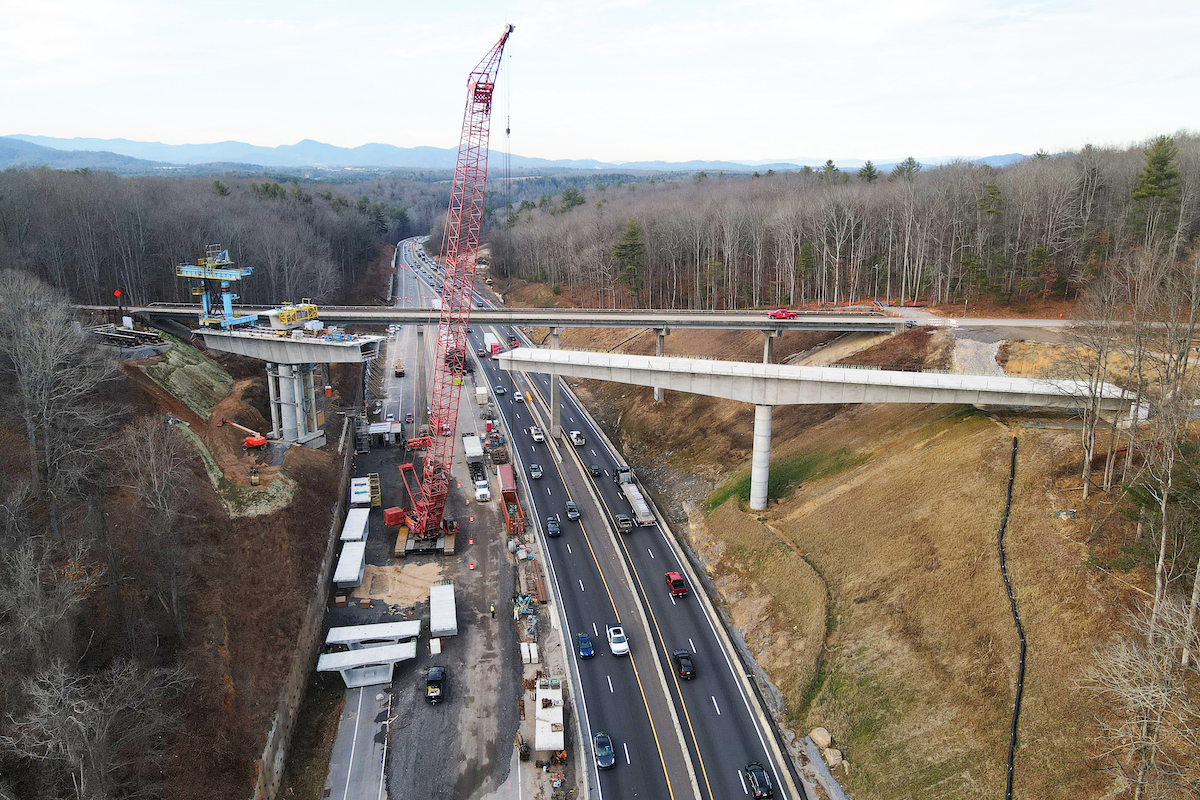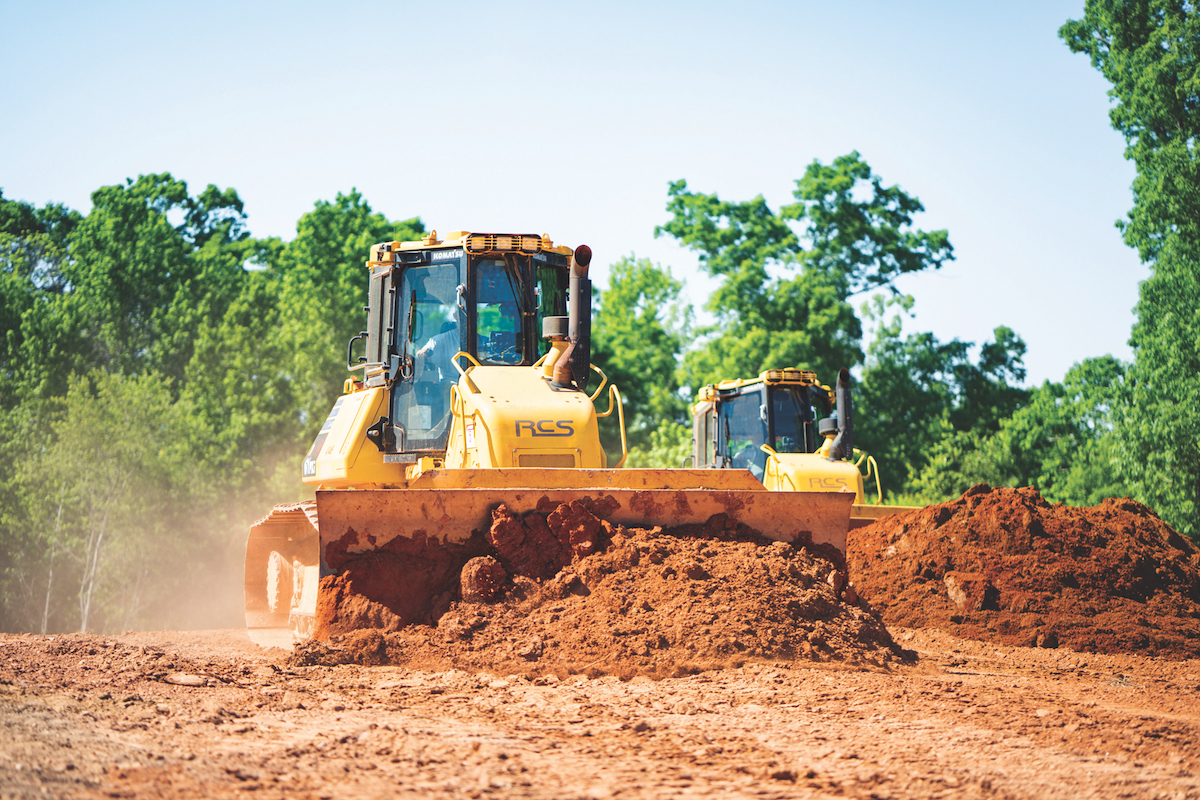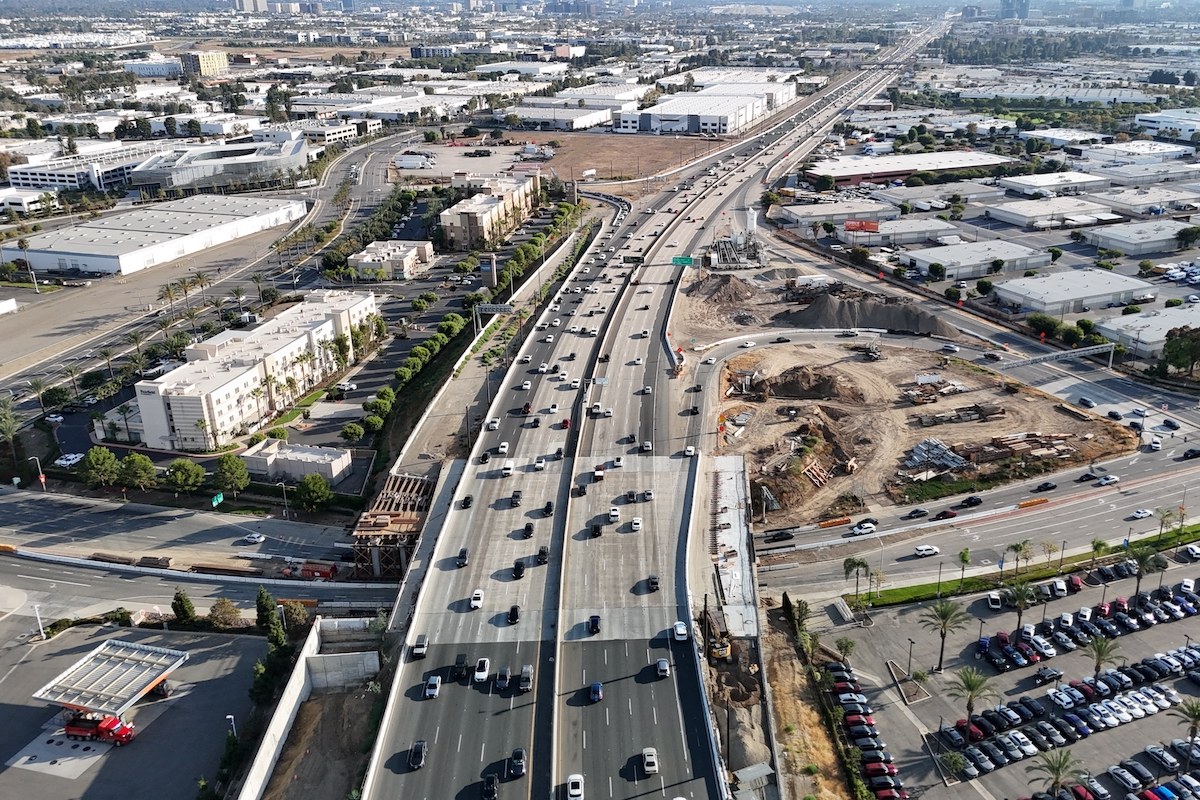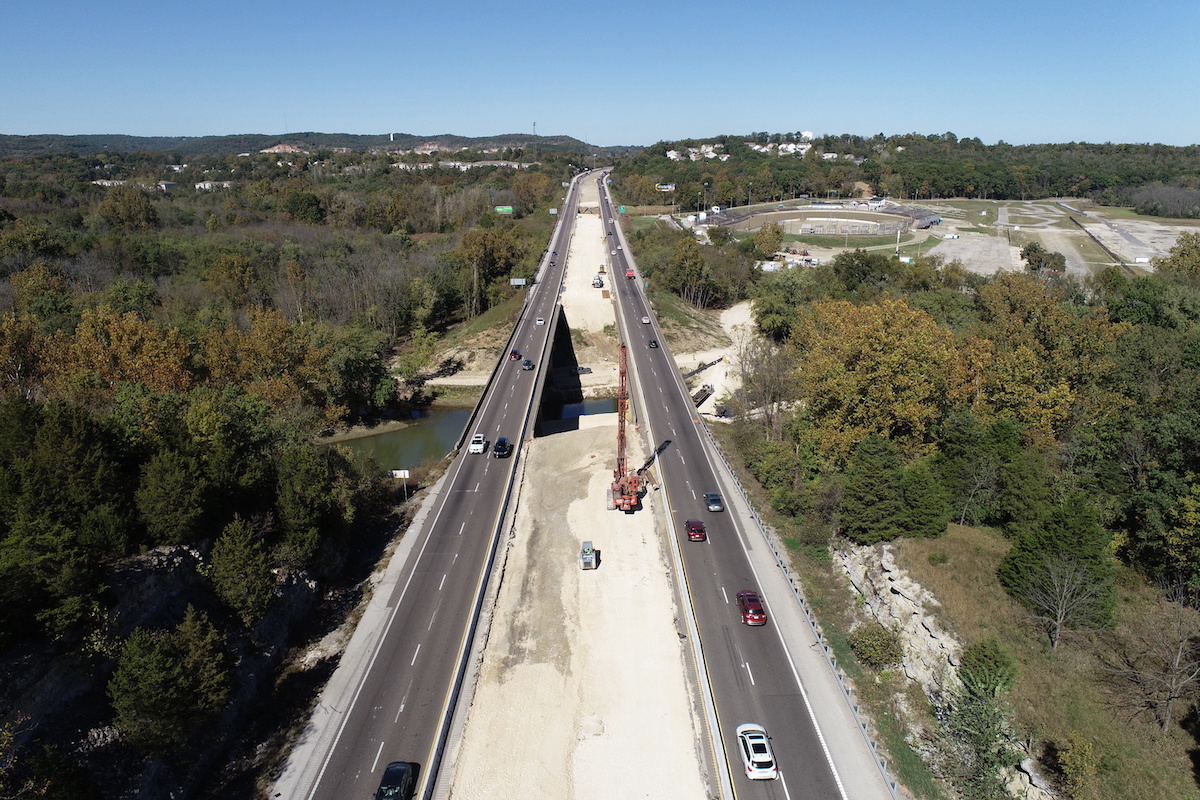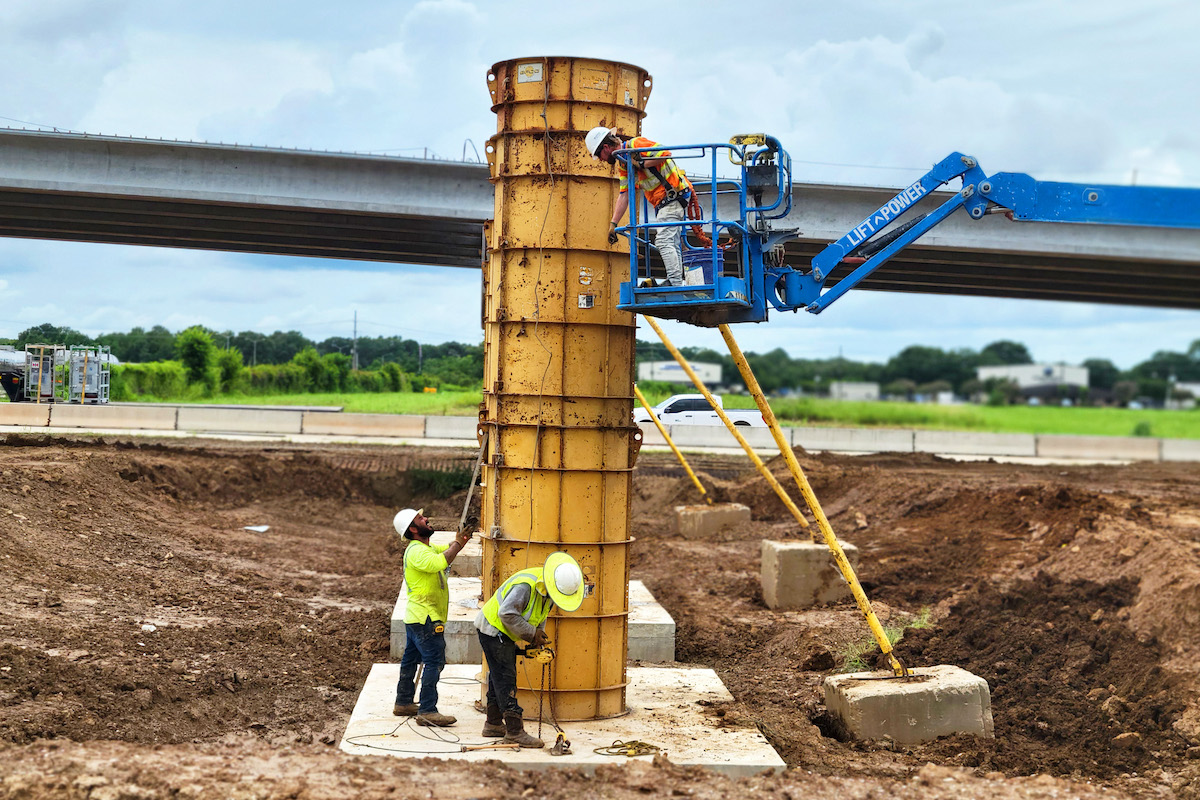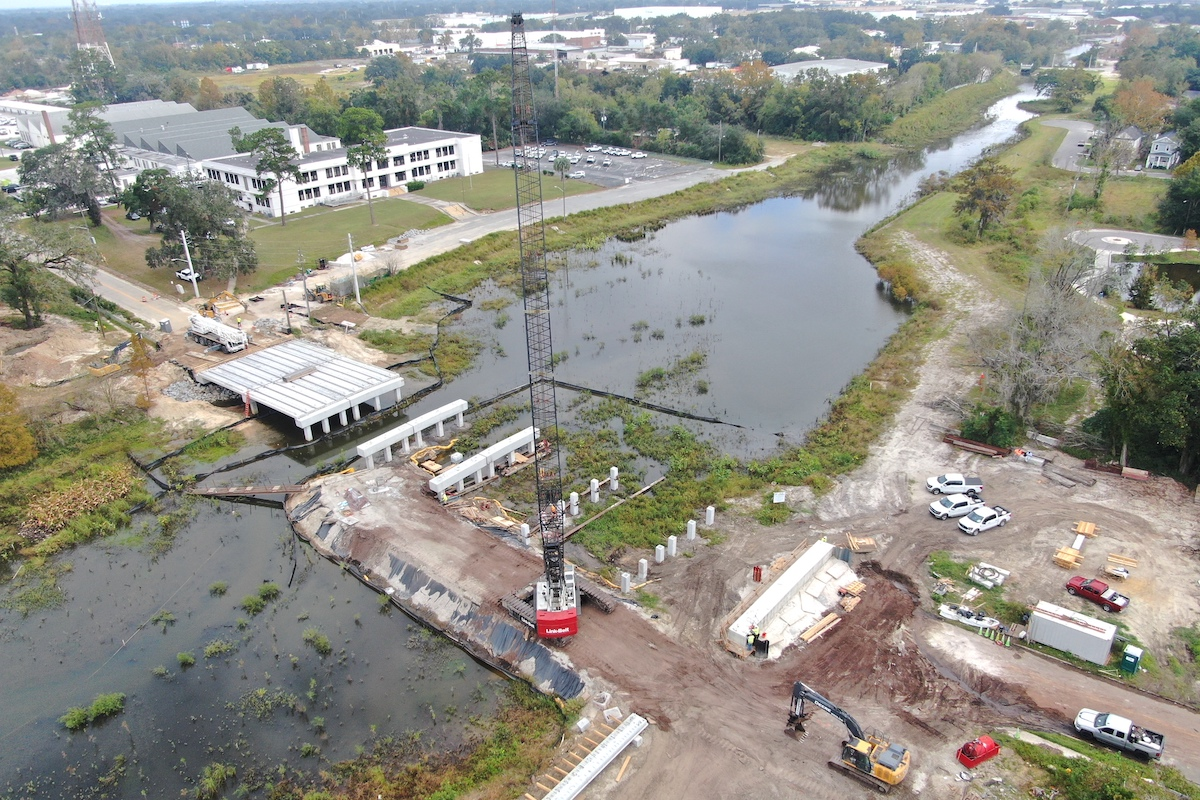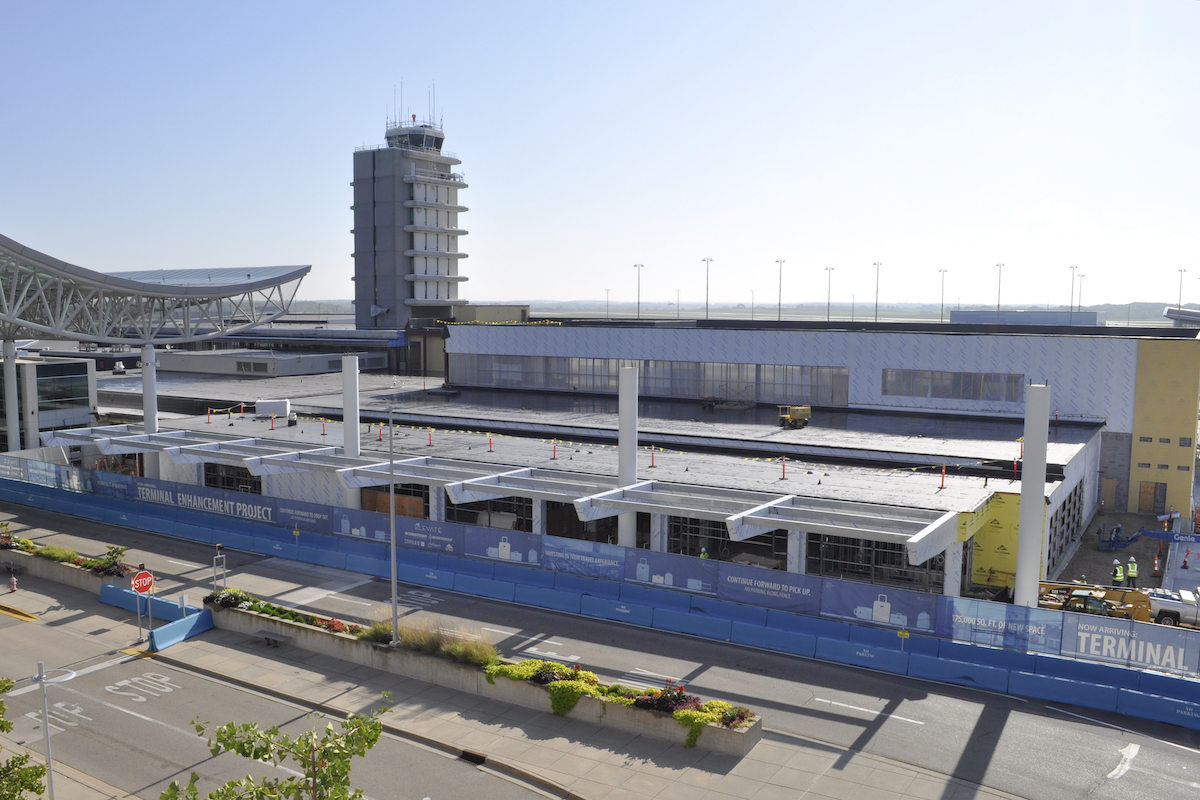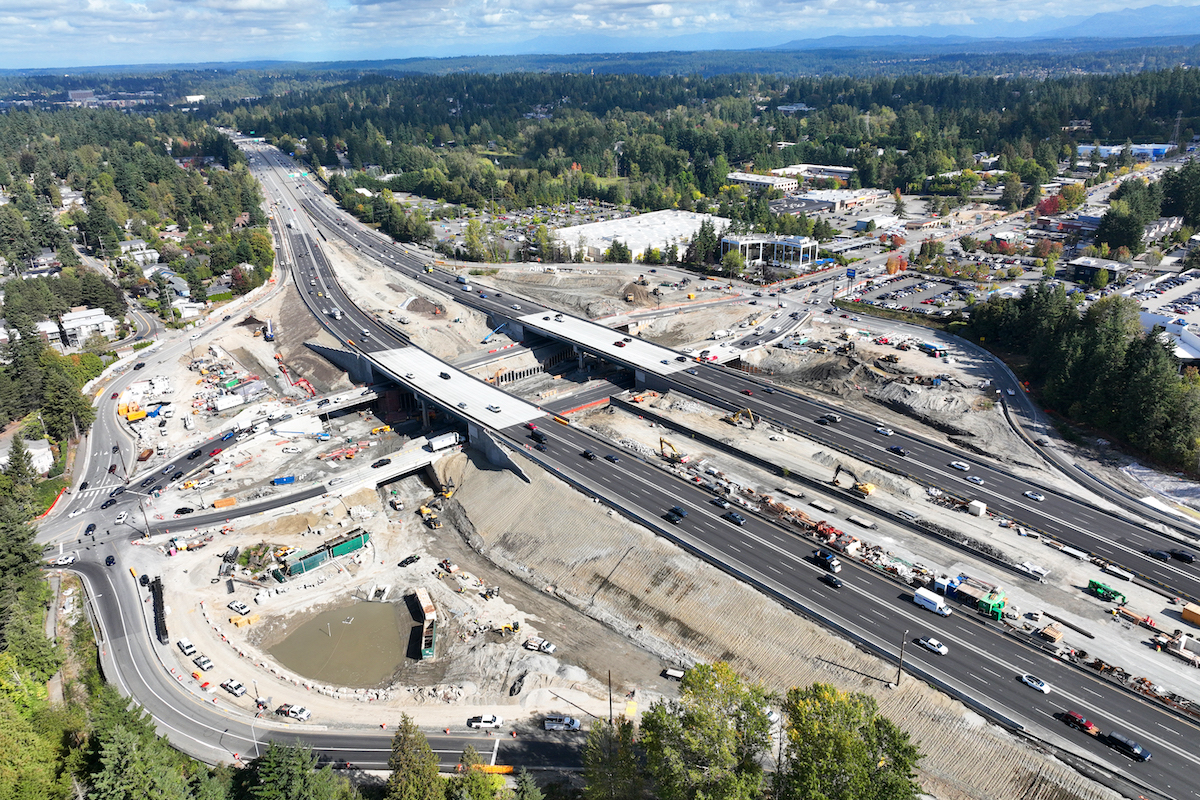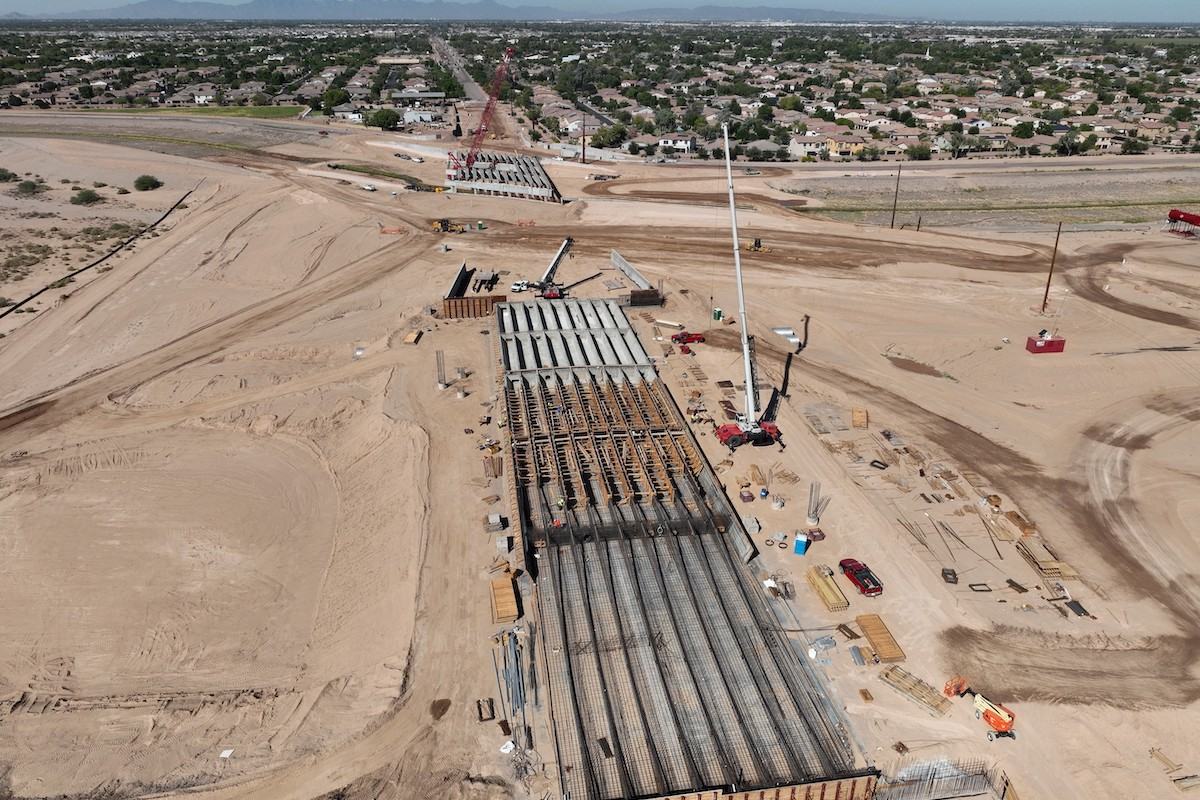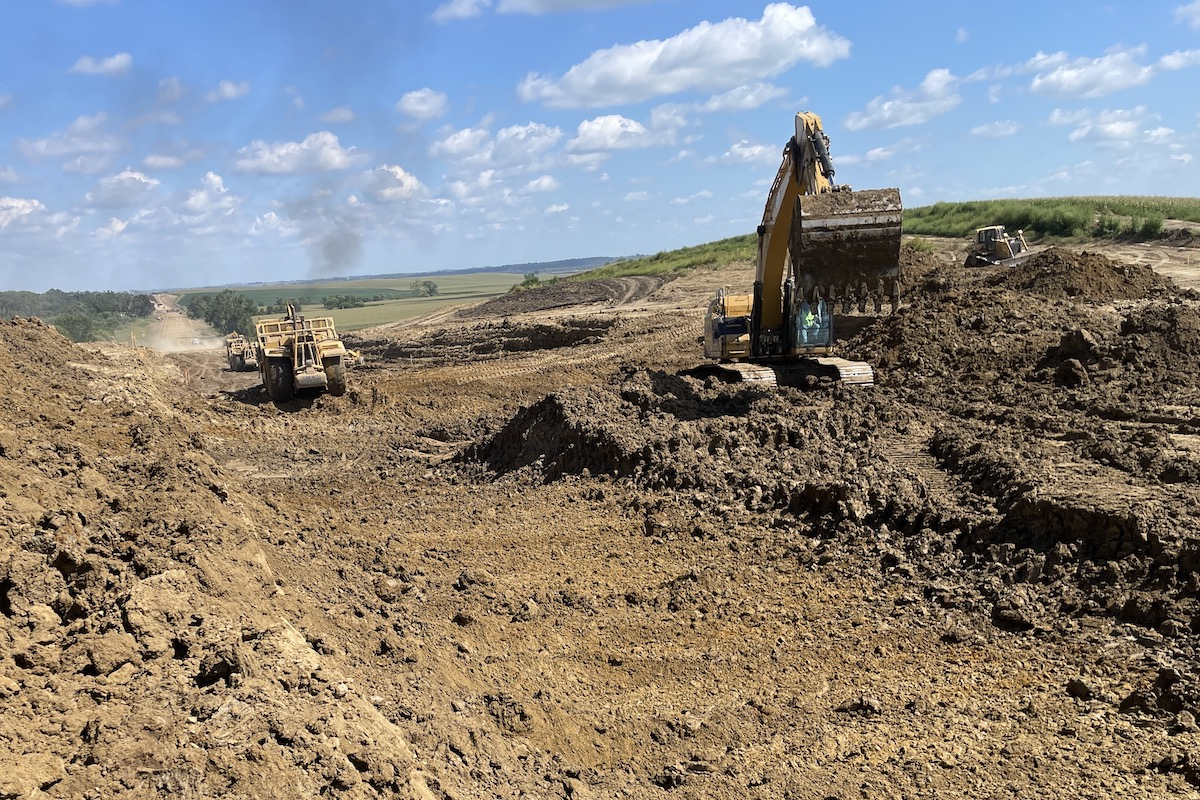Last year on a spring evening in Los Angeles, California, an American barn owl flew across U.S. Highway 101. Observing biologists cheered with joy.
What would seem a commonplace occurrence for this widespread species was anything but. For the first time, biologists led by Travis Longcore, Adjunct Professor at the UCLA Institute of the Environment and Sustainability, and his six-member team of researchers observed evidence that “a dark spot” had been successfully fabricated over U.S. 101.
To wildlife, darkness is safety, so to the research team working on minimizing light pollution, the under-construction Wallis Annenberg Wildlife Crossing is already showing success.
“We saw the owl swoop around us while walking down a ridgeline,” Longcore said. “One researcher observed the owl cross the 101 by flying directly through a dark spot over the newly completed bridge span. It was a special moment to realize that we were there when the first wildlife use — even if in the air — was observed.”
Wildlife crossings are not anything new, but this one, in a densely populated metropolitan area, is over one of the busiest freeways in existence.

| Your local Komatsu America Corp dealer |
|---|
| Linder Industrial Machinery |
According to the National Wildlife Federation, when complete, the crossing will be the largest in the world, the first of its kind in California, and will serve as a global model for urban wildlife conservation.
The Wallis Annenberg Wildlife Crossing is a massive California Department of Transportation (Caltrans) infrastructure project under construction in Agoura Hills, California, near Los Angeles. Southern California heavy construction specialist C. A. Rasmussen, Inc., was selected by Caltrans to build stage one, the portion over U.S. 101.
The 210-foot-long, 174-foot-wide terra-bridge spans 10 lanes of freeway west of Liberty Canyon Road with a goal of reestablishing ecological connectivity for native plants and animal species in the Santa Monica Mountains ecosystem.
The 13 acres of space will allow safe passage for mountain lions, bobcats, deer, coyotes, lizards, and many others, with an acre of native vegetation in the first stage and vegetated sound walls to dampen sound and light for nocturnal animals.

| Your local Trimble Construction Division dealer |
|---|
| SITECH Mid-South |
The project broke ground in 2022 and was named 15th among the top 50 influential projects worldwide, right up there with the Human Genome Project and the Webb Space Telescope. It is expected to be completed in 2026.
The core project partner team includes Caltrans, the National Park Service, the Santa Monica Mountains Conservancy/Mountains Recreation and Conservation Authority, and the National Wildlife Federation.
Robert Rock, President and CEO of Rock Design Associates, and winner of the 2010 International Wildlife Crossing Design Competition while at Michael Van Valkenburgh Associates, was selected to collaborate with Caltrans. He leads a broad team of wildlife crossing experts, including Longcore, in the planning, design, and construction of the wildlife crossing.
As the National Park Service long-term research has shown, the construction of U.S. 101 divided this previously continuous habitat range into isolated habitat fragments and resulted in severely restricted movement between the Santa Monica and the Santa Susana mountain ranges. This has created a barrier to wildlife connectivity, which has led to increased inbreeding, territorial fighting, and low genetic diversity.

| Your local Bomag Americas dealer |
|---|
| Linder Industrial Machinery |
“We have a saying in the wildlife conservation world: islands are where species go to die,” said Beth Pratt, California Regional Executive Director for the National Wildlife Federation. “You start seeing some effects — not just on animals, but on plants — when you have that isolation and you start seeing genetic decline. We now know wildlife needs connectivity, or else it doesn't work.”
The National Park Service discovered that the Southern California mountain lion population had the lowest genetic diversity of any cat outside of the Florida panther. They were inbreeding with their family. They could not get out, and no new cats could get in.
“As they got into more studies, they found that the same genetic isolation was impacting western fence lizards and wren-tits. It’s not just the mountain lions,” Pratt said.
“Our work to build more, faster is already paying dividends across our state,” California Governor Gavin Newsom said. “This wildlife crossing is just one example of how California is building infrastructure that connects rather than divides.”

| Your local Topcon Positioning Systems Inc dealer |
|---|
| Linder Industrial Machinery |
The bridge’s price tag is an estimated $92.2 million, consisting of $34.1 million in private donations and $58.1 million from public funds set aside by the State of California for conservation purposes. Newsom has called the project an “inspiring example” of public-private partnership.
“Usually, infrastructure projects do not have donations from people like Leonardo DiCaprio and Wallis Annenberg,” Pratt said. “You also don't usually have co-leadership, where you have the transportation agency working with two other agencies and a nonprofit. It’s been amazing to watch.”
Building the largest wildlife crossing in the world is complex, and the many components that need to be taken into account include vegetation, light, and sound all while trying to stay on budget and not create traffic interruptions.
The top of the terra-bridge, for example, was designed to be covered in almost one acre of native vegetation.

| Your local Volvo Construction Equipment dealer |
|---|
| Richmond Machinery & Equipment |
“Other wildlife crossings are vegetated like this crossing, but I don’t think anyone has taken the same sort of comprehensive approach that we have taken here,” Rock said. “We know that for wildlife crossings, you have to design in a way that sort of tricks animals into thinking they're not going over the freeway, with all the noise and the light. To achieve that, we are using the latest science to guide our design work, and we are developing the layers of an entire ecosystem on top.”
According to the National Wildlife Federation, plantings will allow the habitat to grow vegetation naturally throughout the site from the soil up, retaining the critical local genetic material. Native oak and willow trees grown from seeds sourced from the site will also be planted, and 12 additional acres of space along the two adjoining slopes where the wildlife crossing will be built will be improved.
Light also impacts the way that wildlife move through at dusk and at nighttime, so the team needed to take steps to reduce the amount of light impact in the adjacent habitat corridors.
“We worked closely with the electrical engineers at Caltrans to place light fixtures down closer to the travel way so we can still keep the foot candle levels that we need on the freeway for safety, while at the same time introducing shielding so it's reducing the impact to the adjacent habitat area,” Rock said.

| Your local Wirtgen America dealer |
|---|
| Dobbs Equipment (SC) |
Working with Longcore, Rock’s team adjusted the color temperature of the light fixtures to be more of an amber color at 1600 to 1700 K, as opposed to the white blue light typically found in high efficiency LEDs, which is more in the 4000 to 5000 K range.
The color of the concrete came into play as well. The primary driver: trying to reduce what is referred to as the Surface Reflectivity Index value of that concrete.
“When light bounces off of surfaces, especially in an urban environment where we have a lot of particulate matter in the atmosphere, those fine grade particulates float around in the atmosphere,” Rock said.
“At nighttime when light reflects off of a surface from an artificial source, it bounces and it reflects up toward that particulate in the atmosphere, creating additional reflection and what's referred to as sky glow,” Rock said. “The more that we can reduce the potential for sky glow, by reducing the reflection off the concrete it will be darker, and that will motivate wildlife to move through these areas.”

| Your local Komatsu America Corp dealer |
|---|
| Linder Industrial Machinery |
By changing the color of the concrete and introducing an integral pigment into the concrete mixture, they changed the color from what Rock refers to as “infrastructure Caltrans grey” to “a dusty mocha color” which helped the team achieve the darkness they were seeking.
The project team also used a combination of both cast-in-place and precast elements for the project.
“We leveraged cost-effective precast materials that also reduced that impact to the traveling public,” Rock said.
The deck surface, a series of precast box girders manufactured at Coreslab Structures’ facility in Perris, California, allowed the team to limit the closure window along the freeway so they only had night closures.

| Your local Komatsu America Corp dealer |
|---|
| Linder Industrial Machinery |
“The abutments and the central bent were all cast in place first, and then these 100-foot-long precast box girders were placed across the span. Then there is a topping slab. All of the vertical walls that are on the top — the sound wall, the planter edge, the outside concrete barrier — were all, again cast-in-place elements,” Rock said. “So we've got cast-in-place, precast, cast-in-place as our sandwich layer going up.”
Rock said the crossing is not just about the ecological factors; it’s also about road safety and economics. Animal Road Crossings states that wildlife-vehicle collisions result in over $8 billion in annual costs in the United States.
U.S. Highway 101 is one of the busiest freeways in the world. Giving animals access to safe crossing is also a win for drivers. Pew Charitable Trusts estimates some 200 humans are killed each year due to the 1 million collisions that occur between wildlife and motor vehicles.
Additionally, the National Park Service has documented that at least 32 of the big cats have been killed on Los Angeles freeways since 2002. The latest death was in September 2024, when a mountain lion with a collar had been found along Soledad Canyon Road in Santa Clarita, California.

| Your local Komatsu America Corp dealer |
|---|
| Linder Industrial Machinery |
“Some wildlife crossings have been, and are being, built with transportation dollars because of safety issues, and there's no doubt this will help with human safety too,” Pratt said.
“A vehicle strike impacts your travel, or impacts the goods being transported. It has an economic ripple effect,” Rock said. “When you have a lane of traffic that's closed because of a vehicle animal strike along the freeway that backs up traffic, it backs up your delivery network, it screws with transportation, and logistics too.”
“This has been incredible to watch, and also how it's transformed not just our transportation agency, but this project has been influential across the country,” Pratt said. “There's been federal legislation that cites this project as the inspiration to give them the confidence to move forward.”
“I think it shows the power of this project, not just that we're getting it built, but it's actually transforming an agency known for infrastructure into one that is really looking at how they can do their infrastructure differently for wildlife,” Pratt said.

| Your local Komatsu America Corp dealer |
|---|
| Linder Industrial Machinery |
Pratt points to C. A. Rasmussen, Inc., and Caltrans for the work that has been accomplished, as well as the assistance from Rock and Dr. Tony Clevenger, a wildlife biologist who worked on the wildlife crossings in Banff National Park up in Alberta, Canada.
“Obviously, it’s not been without challenges, but they've all really risen to the occasion,” Pratt said. “It’s especially wonderful to see these incredible infrastructure folks really making way for wildlife.”
“What I love is how the world came together around this crossing,” Pratt said. “This started out as an LA story, but we had donors from all over the world, and it has inspired projects globally.”
“In a time when we don't agree on a lot, we agree on wildlife crossings,” she said. “They really are a bipartisan thing. Nobody wants to see animals hit by cars. This really is the most hopeful construction project in the world.”










